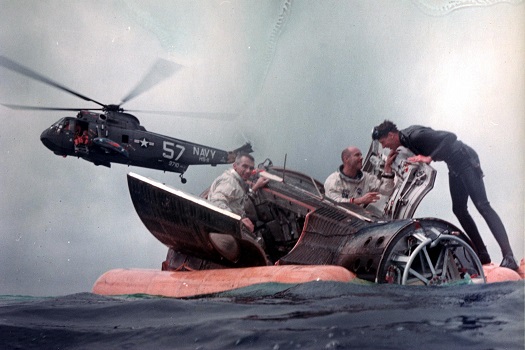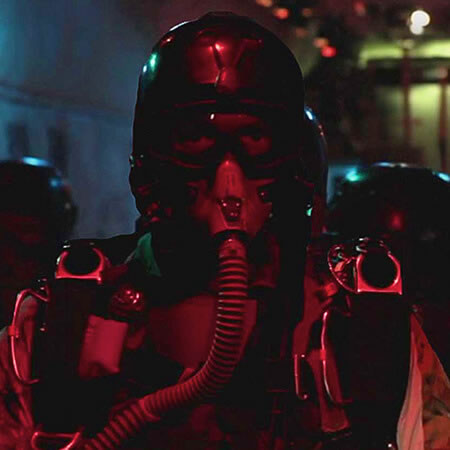UDT’s and the Space Flight Programs
Like most activities conducted by UDT between the wars, they went unnoticed and unrecognized. From the beginning of America’s manned space program in the late 1950’s, NASA decided to utilize water landings for spacecraft and crews returning from their flights. The fledgling space agency relied heavily on the UDTs to help establish an effective astronaut survival and recovery program. Long before America’s first manned space flight in May 1961, UDT personnel were training the Mercury Seven astronaut corps how to safely egress their capsule after it splashed down in the ocean.
Initially, the Navy did not plan to have frogmen participate in the actual recoveries. However, after a successful splashdown of America’s second manned space flight in July 1961, the spacecraft sank and astronaut Gus Grissom nearly drowned. After that recovery procedures for all ensuing Mercury, Gemini, and Apollo flights included UDT personnel to attach a flotation collar and life rafts to the spacecraft before the hatch was opened.

The men performing these tasks were UDT swimmers, flown to the scene by a ship-based Navy helicopter. These recovery procedures were continually refined and well documented at the start of the Apollo program. The initial lunar landing mission of Apollo 11, however, presented a significant additional challenge. The world’s health and science community was worried about returning missions carrying lunar pathogens that could harm plant or animal life.
On July 23 at 0550 USS Hornet time, the Apollo 11 Command Module Columbia hit the Pacific about 920 miles southwest of Pearl Harbor, and immediately turned upside-down by wave and wind action. During the seven minutes required for the spacecraft’s righting system successfully turned it upright, and the UDT team arrived and took control of the operation. After all necessary preparations were accomplished by the UDT men, the hatch was opened and the astronauts exited into the decontamination raft. The UDT men continued with their task of preparing Columbia and its cargo of Moon rocks for retrieval by the ship’s crane.
All of this was being broadcast around the world; thus, it is almost certain that no other UDT or SEAL operation has ever been conducted before such a huge audience – an estimated 500 million people watched the recovery operation live on TV in many countries around the world.
The men of UDTs Atlantic and Pacific established a proud tradition with their participation in America’s manned spaceflight program throughout the 1960’s. NASA’s Constellation Program envisions returning to the Moon about 2020, and may once again use water landings upon return to Earth. It is certainly possible that U.S. Navy SEALs will again be called upon to support our manned space exploration programs.

SITREP Sign-up
Be among the first to know the latest news and intel out of the Navy SEAL Museum San Diego.
